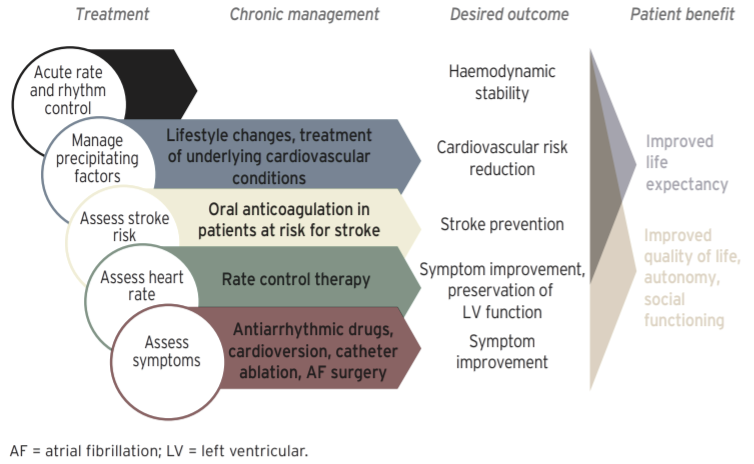Holter ECG
Holter ECG
The diagnosis of AF normally requires rhythm documentation using an electrocardiogram (ECG) showing the typical pattern of AF. This is mostly performed by a holter monitor. A holter uses electrodes and a recording device to track your heart’s rhythm for 24 to 72 hours. This research is unpleasant for the patient as the user for instance can’t take a shower. The undesirable patient experience is one of the reasons for the relatively short measuring durations, which results in potentially missing episodes.
The CardioWatch Bracelet is very comfortable to wear. While the user wears the bracelet, the data is sent to a phone, cloud or to the hospitals IT system.
The encrypted data will be forwarded to a CE Certified algorithm and will generate a report on the user's heart rhythm.
The technique
The activity and heart rate monitor of Corsano CardioWatch consists of an accelerometer and a photoplethysmogram (PPG) sensor. The PPG sensor consists of an LED and a photodiode and measures fluctuations in the light reflected from the arteries and arterioles in the subcutaneous tissue. From the light fluctuations measured the actual heart rate and potential cardiac arrhythmias can be detected. In addition to the PPG sensor the accelerometer provides data on the activity level of the wearer of the bracelet.
Patient Friendly
The bracelet is esthetic and comfortable for the patient, which is favorable for both the patient as the clinician. For the patient it is less of a burden in comparison to for instance monitoring with a holter, because he or she only needs to wear the bracelet. Furthermore, the patient doesn’t have to take into account the wearable and can pursue his normal life.
This results in beneficial outcomes for the clinician as well, because the patient can wear the bracelet for an undetermined time in which it will continuously monitor the heart. In addition, because the patient isn’t limited in his normal life, it results in a better representation of reality.
Information on improving health
When diagnosed with AF, the main goals of treatment are to prevent circulatory instability and stroke. Regular exercise improves atrial fibrillation symptoms and AF-related quality of life. In the following image several treatment plans with their desired outcome are outlined.

Interested in our Trial Programme?
We are currently performing pilots with selected clients. Contact us if you want to know more!